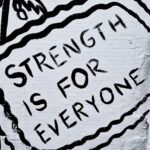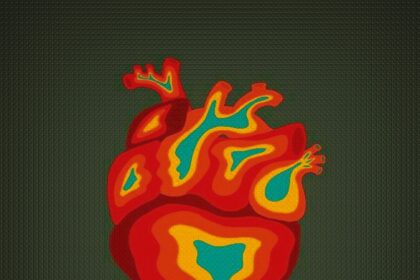Healing childhood trauma is a journey many of us never expected to take, yet it holds the power to transform our lives in the most profound ways. For years, the shadows of past pain can quietly shape how we see ourselves and the world around us, trapping us in patterns of fear, doubt, and sorrow. But here’s the truth: healing is possible. Embracing joy and reclaiming your freedom after trauma isn’t just a hopeful idea-it’s a vital path toward rediscovering your true self. In this space, we’ll explore how to gently unravel the knots of childhood wounds, unlock the courage to feel deeply, and step into a life filled with light, love, and liberation. Because no matter where you’ve been, joy can still find its way back to you.
Understanding the Roots of Childhood Trauma and Its Lasting Impact
Childhood trauma often takes root in experiences that break the natural sense of safety a child should feel. These moments-whether obvious or subtle-create deep emotional wounds that shape a person’s outlook long into adulthood. From neglect and abuse to household dysfunction and loss, trauma’s imprint can manifest in unexpected ways, such as struggles with trust, feelings of unworthiness, and an ongoing fight to control emotions. It is important to recognize that trauma doesn’t discriminate; it can stem from single incidents or from prolonged environments where a child’s needs were unmet or ignored.
Understanding these origins involves more than just identifying scars; it’s about seeing the nuanced ways trauma rewires the brain and the heart. The lasting impact can influence relationships, self-esteem, and even physical health. To truly begin the healing journey, one must acknowledge the following:
- Emotional fragmentation: trauma can cause a split between thoughts and feelings.
- Hypervigilance: a heightened sense of alertness to danger, even when safe.
- Internalized shame: a false belief that the trauma was their fault or that they are inherently flawed.
This awareness is the cornerstone of liberation-it brings the truths from the shadows into the light, empowering survivors to reclaim their narrative rather than being defined by their past pain.
Cultivating Self-Compassion to Begin Your Healing Journey
Opening your heart to kindness and understanding towards yourself is the first tender step toward mending old wounds. Instead of harsh judgment or self-criticism, invite a gentle voice that recognizes your pain and honors your bravery. This nurturing attitude can transform the way you relate to your past, allowing healing to unfold naturally. When you practice self-compassion, you grant yourself permission to be imperfect, vulnerable, and beautifully human in every step of your recovery.
Begin by embracing simple yet powerful habits that reinforce your self-worth and cultivate inner peace:
- Speak kindly: Replace negative self-talk with affirmations that inspire hope and resilience.
- Practice presence: Allow yourself to sit with emotions without judgment, witnessing them with curiosity and care.
- Offer forgiveness: Let go of blame-towards yourself and others-to lighten the burden of emotional scars.
- Create safe space: Surround yourself with supportive people who encourage your healing journey.
By fostering these gentle practices, you begin to weave a sanctuary of self-love-a vital foundation from which true freedom and joy can bloom.
Practical Tools to Transform Pain into Empowerment
Unlocking the power within requires more than just reflection; it demands actionable strategies that gently guide us from pain toward empowerment. Begin by embracing mindful self-compassion-allow yourself the grace to feel and heal without judgment. This practice anchors you in the present moment, creating a safe space where past wounds lose their grip. Incorporate daily affirmations that resonate with your journey, like “I am worthy of love and freedom”. These simple yet powerful reinforcements rewire your internal dialogue to one of strength and hope.
Building a toolkit for transformation also means nurturing your body and spirit through grounded practices. Consider incorporating:
- Creative expression: Journaling, painting, or music as outlets to release and reframe emotions.
- Movement-based therapies: Yoga, dance, or gentle stretching to reconnect with your physical self.
- Support networks: Trusted communities or professional guidance that offer validation and encouragement.
By weaving these approaches into your daily life, you bloom beyond survival into thriving-a testament to your resilience and an invitation to cultivate lasting joy.
Embracing Joy as a Pathway to True Freedom and Wholeness
When we allow ourselves to truly feel joy, we unlock a profound form of liberation-a space where past wounds no longer chain us to pain. Joy is not merely a fleeting emotion but a transformative energy that nurtures our spirit and reclaims our innate wholeness. In a world that often teaches us to suppress happiness after trauma, choosing to embrace joy becomes an act of radical self-love and defiance against the shadows of our childhood. It’s in the moments of laughter, wonder, and peace that we begin to stitch together the fragments of our soul, creating a tapestry rich with resilience and light.
Cultivating this vibrant joy involves simple, heartfelt practices that invite healing and presence:
- Allowing yourself to savor small pleasures without guilt
- Connecting with nature’s rhythm and beauty
- Engaging in creative expression without judgment
- Surrounding yourself with people who uplift and support your growth
These are not just activities-they are essential steps on the journey to freedom. By embracing joy as a powerful force, you honor your inner child, mend the unseen wounds, and open the door to living fully alive and unapologetically whole.
To Conclude
Healing childhood trauma is not a simple path, but it is one filled with hope, courage, and profound transformation. Embracing joy doesn’t mean forgetting the pain-it means choosing to rise above it, to reclaim your story, and to find freedom in the moments that make your heart smile. Remember, you are not defined by your past, but by the strength you show in moving forward. Let your journey be a testament to resilience, a celebration of healing, and an open invitation to live fully, authentically, and joyously. Your freedom is waiting-embrace it with open arms.
















